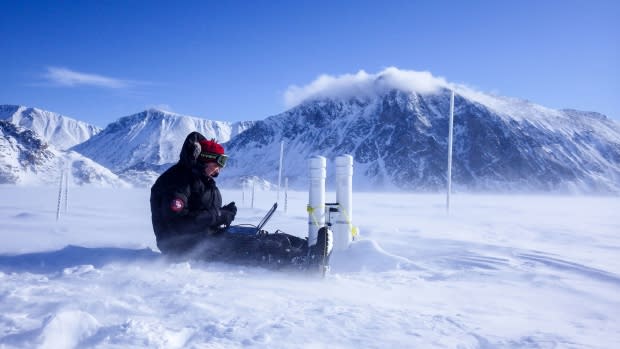SmartICE opens Nain production centre for ice-measuring tech
SmartIce is one step closer to making ice travel safe for residents of northern Canada.
The not-for-profit social enterprise — Sea-ice Monitoring And Real-Time Information for Coastal Environments, or SmartICE — opened its northern production centre in Nain this week.
The centre will train and employ people 18 to 30 years old to manufacture its SmartBuoy technology in the Labrador coastal Inuit community.
So what's so smart about this new technology?
The buoys are used to measure ice thickness and to ensure safe travel routes and hunting areas for people living in northern communities across Canada.
"What's very interesting about this is the buoys are positioned in the areas where the communities tell us to go, because we don't place them," said Carolann Harding, executive director of SmartICE.
"We place them where the communities say, 'Here's the sticky points in the breakup and freeze-ups of the ice seasons,' and we want to keep people safe in their travel."
It's designed to keep people safe
Each buoy is equipped with technology that measures ice thickness, communicates the data to satellites and provides information to an app.
Residents can then retrieve the information to find out what ice surfaces are safe to travel over.

"The idea is that the community members will look at that, they will make an informed decision about their travel on the sea ice," said Harding.
"Whether they are going to their cabin, they're going to another community, they're going out for country food, wherever they are going, so it's really to keep people safe."
It's also keeping people employed
As long as orders for SmartBuoys are coming in, the Nain production centre will be operating.
"Our plan is this will be where the buoys will be made and deployed from here," Harding said.
"They are all made by hand and all the component pieces and electronic pieces all have to come in but we've got orders on the books so we're really happy about that."
Read more from CBC Newfoundland and Labrador

